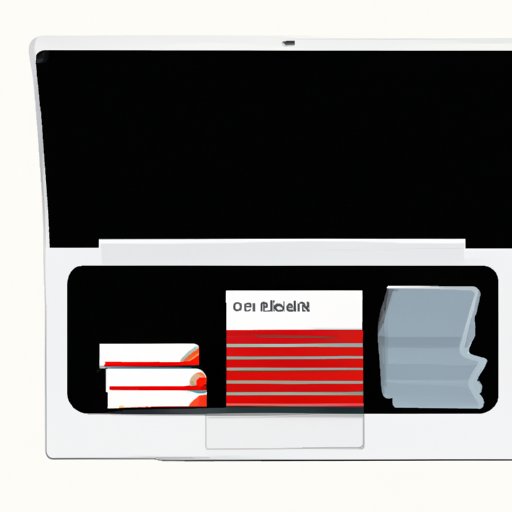
I. Introduction
MacBooks are great computers, but they’re not immune to running out of space. Whether you’re storing photos, streaming movies, or downloading software, you need to know how to free up space on your MacBook. This article provides simple tips for keeping your MacBook clutter-free
II. Delete Unused Applications
Applications can take up a lot of space on a MacBook, especially if you don’t use them. Uninstalling applications frees up space and speeds up your computer. To uninstall an application on a MacBook, you’ll need to delete it from the Applications folder, and you can use a third-party utility like AppCleaner to ensure all the associated files are removed. Identify which applications to delete by searching for those you don’t use often. By deleting unused applications, you’re not just freeing up space, you’re also decluttering your MacBook and making it easier to find what you need
III. Clear Cache and Temporary Files
Cache and temporary files are essential for the optimal performance of your MacBook, but they can take up a lot of space over time. Cache files are created by applications and web browsers to store frequently accessed data, while temporary files are created by the system and applications during normal use. Clearing cache and temporary files results in a faster MacBook, and it can free up gigabytes of space. On a MacBook, you can clear cache and temporary files by going to System Preferences > Apple ID > Overview > Manage, or by using a third-party utility like CleanMyMac or CCleaner
IV. Use External Drives
External drives are a great way to free up space on a MacBook. They work by providing extra storage space that you can access whenever you need it. There are several types of external drives available, including USB drives, SD cards, and cloud storage. Choose the type of drive that suits your needs, and keep in mind that cloud storage is a great option if you need to access your files from multiple devices. To transfer files to an external drive on a MacBook, simply plug in the drive, and drag and drop the files you want to move. When you’re finished, eject the drive safely to prevent data loss or corruption
V. Remove Old Email Attachments
Email attachments can take up a surprising amount of space on a MacBook, especially if you’ve been using email for a long time. Remove old email attachments by searching for attachments based on their file size or format. You can also use the Smart Mailbox feature in Apple Mail to sort your emails by attachment size or age. Going forward, you can manage email attachments by using cloud storage or an external drive, or by saving them to a specific folder on your MacBook and deleting them when you no longer need them
VI. Delete Duplicate Files
Duplicate files take up a lot of space on a MacBook, and they can be difficult to locate manually. Duplicate files are files that have the same content but different file names or locations. Use a duplicate file finder app like Gemini, DupeGuru, or Easy Duplicate Finder to locate and delete duplicates. To use a duplicate file finder app, select the folders you want to scan, select the file types you want to compare, and let the app run. Once it’s finished, you’ll be presented with a list of duplicate files, and you can choose which ones to delete. By removing duplicate files, you’re not just freeing up space, you’re also reducing the risk of data loss or corruption
VII. Remove Unused Language Files
Language files are installed by default on a MacBook, even if you only use one language. These files can take up a lot of space, and they often go unnoticed. To remove unused language files, you can use a third-party app like Monolingual or TinkerTool. These apps allow you to remove the language files you don’t need, and they can free up several gigabytes of space. Removing unused language files also speeds up your MacBook and reduces clutter
VIII. Manage Downloads
Downloads can accumulate over time and take up valuable space on a MacBook. To manage downloads from web browsers, you can go to the Downloads folder and delete files you no longer need. You can also change the download location to an external drive or cloud storage to free up space on your MacBook. Clear the downloads folder regularly, and be mindful of what you’re downloading and saving to your MacBook in the first place
IX. Conclusion
Freeing up space on your MacBook is important to ensure optimal performance, speed, and productivity. By following these simple tips, you can declutter your MacBook, and free up space for the things that matter most. Remember to uninstall unused applications, clear cache and temporary files, use external drives, remove old email attachments, delete duplicate files, remove unused language files, and manage downloads. You’ll notice a significant improvement in your MacBook’s performance and speed.




